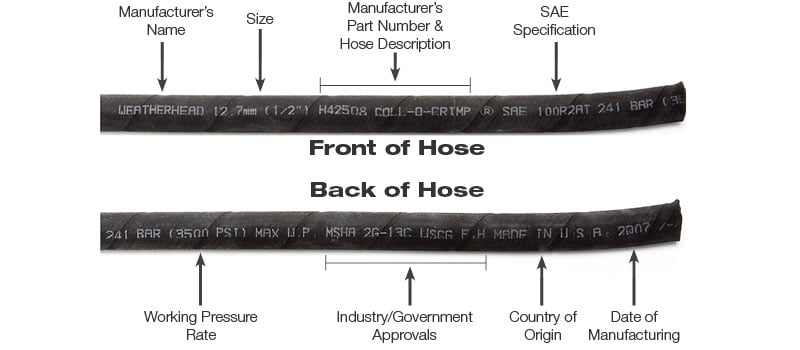Some people think that they can use any hose for any application. They are terribly mistaken and this leaves them open to serious risks to their safety.
Different hoses are designed to meet the requirements of different applications, which is why it is critical to choose a hose that is designed for your application. Failure to choose the right hose can lead to serious safety hazards.
When you want to replace an existing hose or select a hose for a new application, you should keep the acronym ‘STAMP’ in mind. STAMP is an industry-wide standard that stands for size, temperature, application, media, and pressure. When you remember STAMP, you won’t face any trouble in selecting the correct hose for your application.
Size
You must size the hose I.D. correctly to acquire the right flow speed. If the flow is too slow, the performance of the system will be sluggish while an extremely high flow can result in leaks, pressure drops and system damage.
The system of measure used for identifying fitting and hose sizes is called Dash Sizes or Dash Numbers. The dash size is the measure of the inner diameter of a hose in sixteenths of an inch.
You must then check the layline to get the hose size. If the printing on the hose isn’t apparent, you must cut the hose to measure the inside diameter.


Temperature
Ambient temperature is the temperature that exists outside the hose and the media temperature is the temperature of the media conveyed through the hose. When selecting a hose for your application, you must consider both temperatures. The temperature rating of the hose you consider for your application must exceed or meet the ambient or media temperature of the application.
Application
Before you choose a hose, you must consider how you plan to use the hose assembly in your application. Answering these questions can help: What is the equipment? What are the environment factors? Are mechanical loads a concern? Will the routing be confined? What type of fittings will you use, permanent or field attachable? Will the assembly be subjected to abrasion?
Media
You can select the correct material of the hose by determining the media that will go through it. Selection of the hose must assure compatibility of hose components and materials with the chemical/fluid being used. It is also important for you to consider the concentration of a specific chemical that the hose will convey.
Pressure
Working pressures of the hose assembly must be greater than or equal to the system pressure. The maximum operating pressure is the maximum pressure that the system gets exposed to. The hose you select must not be rated to handle a pressure less than the maximum operating pressure.
STAMP
Size - What size or sizes of hose will you need? The dash number or dash size is the measure of a hose's inner diameter in sixteenths of an inch. (There are exceptions to this rule such as SAE 100R5 hose.)
Temperature - What is the ambient temperature (temperature that exists outside the hose) and media temperature (temperature of the media conveyed through the hose)?
Application - What is the equipment? What are the environmental factors? Are mechanical loads a concern? Will the routing be confined? What type of fittings are needed, permanent or field attachable? Will the assembly be subjected to abrasion?
Media - What will the hose convey?
Pressure - What is the working pressure needed?
| 04 = 1/4" | 10 = 5/8" | 20 = 1-1/4" |
| 06 = 3/8" | 12 = 3/4" | 24 = 1-1/2" |
| 08 = 1/2" | 16 = 1" | 32 = 2" |
Temperature - What is the ambient temperature (temperature that exists outside the hose) and media temperature (temperature of the media conveyed through the hose)?
Application - What is the equipment? What are the environmental factors? Are mechanical loads a concern? Will the routing be confined? What type of fittings are needed, permanent or field attachable? Will the assembly be subjected to abrasion?
Media - What will the hose convey?
Pressure - What is the working pressure needed?
The STAMP acronym is absolutely critical when it comes to selecting the correct hose for your application. If you need more help in choosing the right hose for your application, find a rep to help reel in a solution.
.png?width=131&height=58&name=image%20(40).png)
